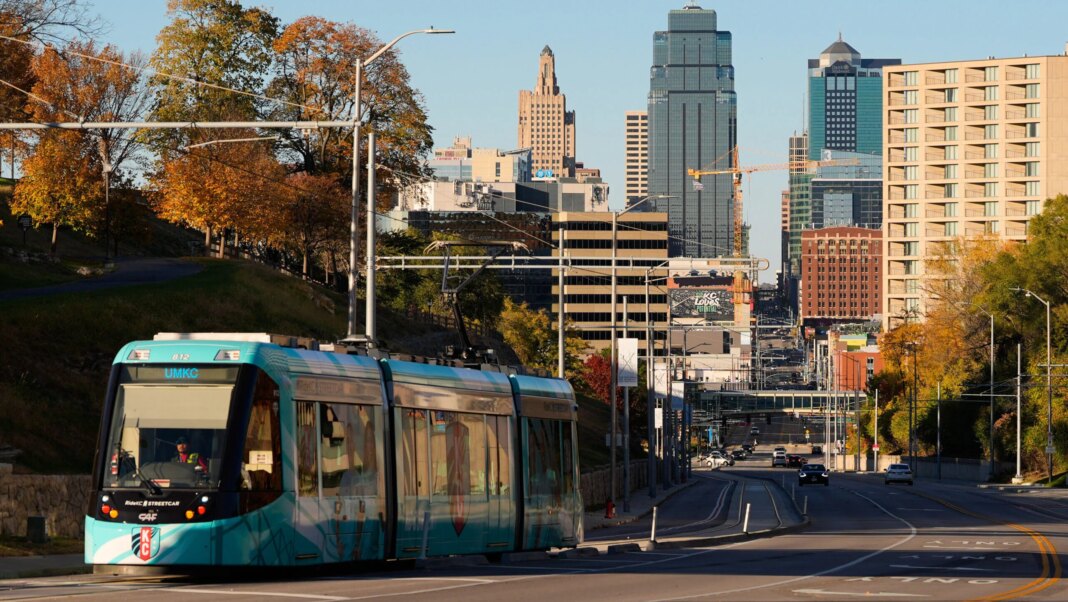The Impact of Redistricting on Diverse Communities: A Tale of Kansas City and Boonville
To grasp the effects of the rush to redraw America’s congressional districts before the 2026 elections, we can look at a striking contrast: the historically Black neighborhood of 18th and Vine in downtown Kansas City, Missouri, and the small, predominantly white town of Boonville, home to about 7,800 residents.
18th and Vine: A Cultural Jewel
The 18th and Vine community holds a rich history marked by cultural significance, particularly in the realm of segregated professional baseball. The area features a museum that recounts these stories, celebrating legends like Jackie Robinson, who broke Major League Baseball’s color barrier. Currently, the community’s leaders are discussing plans to expand the city’s streetcar line, aiming to attract more visitors to its cultural and historical offerings.
Boonville: Cycling Through History
About 100 miles east, Boonville is looking to revitalize its community by restoring an old railroad bridge. This project aims to provide cyclists with a more direct route on a popular cross-state bike trail that runs through this mostly white farming community. It showcases the town’s commitment to enhancing local tourism and connectivity with nature.
The Politics of Redistricting
In September, Missouri Republicans passed a new congressional map that has significant implications for communities like 18th and Vine and Boonville. This effort was largely influenced by President Donald Trump’s call for redistricting to create additional favorable congressional seats for the GOP. Missouri’s new map targets Democratic U.S. Rep. Emanuel Cleaver, altering his district by slicing parts of Kansas City and incorporating more Republican-leaning rural territory.
Redistricting often results in a mix of rural and urban areas within congressional districts. However, changing these boundaries affects priorities and can dictate the federal projects that lawmakers advocate for, from health care to education funding.
Concerns and Priorities: A Divergent Future
Robert Sylvan, an 81-year-old Kansas City resident, worries about the potential upheaval in the dynamics that impact his community. This sentiment is echoed by Boonville’s Republican state Rep. Tim Taylor, who mentions that farmers previously represented by Cleaver felt disconnected from him, raising doubts about how the needs of both communities can be balanced under a new representative.
“Where he lives, things are different than they are here,” says Taylor, who despite his reservations, voted in favor of the redistricting plan.
Community members in Kansas City express concerns that if Cleaver loses the election, 18th and Vine may no longer receive adequate attention. Cleaver has historically advocated for social justice, which resonates deeply with the neighborhood, and its advocates fear losing this representation.
The Demographic Divide
The stark demographic differences between 18th and Vine and Boonville paint a concerning picture. While over 64% of residents in the 18th and Vine community are Black, Boonville is comprised of less than 11% Black residents. The new redistricting map suggests that Missouri could shift from having people of color representing two of its eight House seats to just one. Currently, non-Hispanic white individuals make up 62% of Missouri’s population but would command 88% of its House seats under the proposed changes.
This demographic shift raises issues of representation, as individuals who may not understand the urban context and its unique challenges could hold office. Emanuel Cleaver III, the congressman’s son, notes that the new configurations could mean electing representatives with little to no experience interacting with communities of color.
Divergent Needs and Perspectives
The variances in priorities between 18th and Vine and Boonville underline the complexities of redistricting. An 18th and Vine resident is nearly twice as likely to lack health insurance as someone from Boonville, highlighting significant healthcare disparities. Boonville, having been without a hospital since 2020, faces its unique struggles, placing emphasis on rural healthcare needs.
In terms of legislative priorities, residents of Kansas City advocate for stricter gun laws to combat urban violence, whereas Boonville’s representatives may favor the expansion of gun rights. The communities’ political inclinations reflect the larger national schism, making compromises increasingly difficult.
18th and Vine: A Legacy Under Pressure
Once a vibrant hub for jazz and culture, 18th and Vine has faced challenges over the years, particularly in revitalization efforts. Cleaver has been instrumental in securing over $100 million for redevelopment, with his latest achievement being $15.5 million in federal funding aimed at renovating the nation’s oldest Black-owned housing cooperative.
Yet, with growth comes concern. As taxpayer funds help transform the area, longtime residents worry about being priced out of their community. Initiatives such as the proposed pedestrian plaza and streetcar extension further amplify these sentiments.
Boonville’s Path to Revitalization
Despite facing challenges, Boonville has utilized the Katy Trail, stretching 240 miles, to inject life into its community. The trail connects major points of interest and increases tourism, which has been vital for Boonville’s revival. Local leaders attribute the trail’s success to its role in making the town more accessible and attractive.
The city has applied for federal assistance to restore the historic Katy Bridge, which residents deem an essential project to complete the trail’s infrastructure. The optimism surrounding this initiative serves as a reminder of how federal investment can rejuvenate rural communities.
Bridging the Divide: A Future of Mutual Understanding
As Missouri navigates the complexities of redistricting and its implications on diverse communities, the stories from 18th and Vine and Boonville serve as poignant reminders of the importance of representation. Understanding the distinct needs and histories of these areas could lead to a more equitable political landscape. Through concerted efforts and communication, there lies potential for bridging the divide and fostering a deeper understanding between urban and rural communities.



